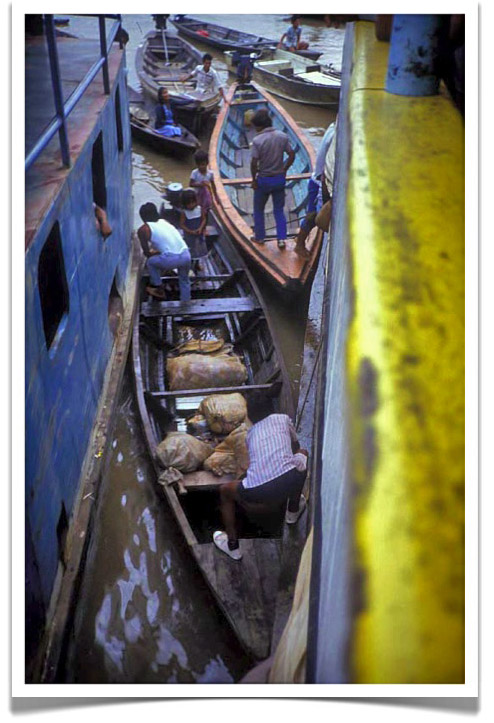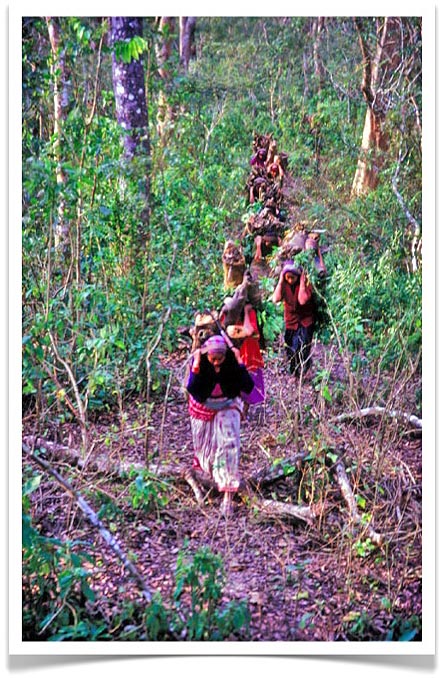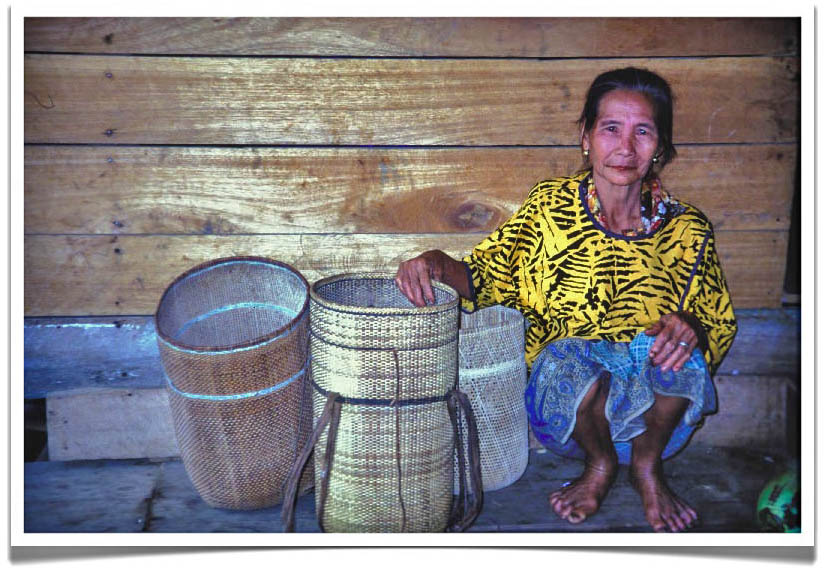Watering the Lotus
 Thursday, January 29, 2009 at 8:02PM
Thursday, January 29, 2009 at 8:02PM 
A street vendor in Hanoi waters her basket of lotus flowers (Nelumbo nucifera) and roses. [NOTE: Taken during a wonderful afternoon of just wandering around town with my camera].
If you see books or music or tools on this site that you would like to buy through Amazon, click here and thus i have seen will get a small percentage of the purchase price of the item. Thank you.
The Elements of Typographic Style
Patagonia Synchilla Snap-T Pullover
Minding the Earth, Mending the Word: Zen and the Art of Planetary Crisis
North Face Base Camp Duffel (Medium)
 Thursday, January 29, 2009 at 8:02PM
Thursday, January 29, 2009 at 8:02PM 
A street vendor in Hanoi waters her basket of lotus flowers (Nelumbo nucifera) and roses. [NOTE: Taken during a wonderful afternoon of just wandering around town with my camera].
 Wednesday, January 28, 2009 at 8:12AM
Wednesday, January 28, 2009 at 8:12AM 
Bubus are cylindrical fish traps made by villagers at Danau Sentarum (see Danau Sentarum and Cordage) in West Kalimantan. The traps are made out of rattan, and each one requires about 500 canes. The preferred rattan to use for bubus is Calamus schistoacanthus, or "duri antu", one of only three rattan species found in local flooded forests. The stem fiber of C. schistoacanthus is extremely tolerant of daily submersion in the lake, and a well-made bubu can last four to five years. A dedicated fisherman may have dozens of these traps. [NOTE: More about the use of rattan at Danau Sentarum can be found here].
 Tuesday, January 27, 2009 at 9:52AM
Tuesday, January 27, 2009 at 9:52AM 
Every time I walked through the Belén market in Iquitos (which was a lot in the early 1980's), this lady was at her post rolling black tobacco cigarettes. I actually smoked in those days, but I was never brave enough to buy a "100 pack" from her.
These hand-rolled cigarettes were also used as "mapachos" to cast spells on people. A shaman would put a spell on the cigarette, and the spell would be transferred by lighting the cigarette and then blowing smoke over the appropriate person. I was given three mapachos containing an "undying love" spell before traveling to Mexico to see Elysa (we weren't married at this point). I felt a little sheepish about lighting up and blowing smoke all over her, but I thought "hey, you never know". We've been married now for 23 years. Go figure.
 Monday, January 26, 2009 at 9:07AM
Monday, January 26, 2009 at 9:07AM This little guy had good handwriting and was really careful recording the data from the forest inventory. Very serious and focused...until he saw me with the movie camera.
 Friday, January 23, 2009 at 9:29AM
Friday, January 23, 2009 at 9:29AM 
When the riverboats ("lanchas') are docked at the Iquitos harbor, a lot of little boats converge on them to load and unload cargo. When you look down from one of the lanchas, as when I shot this picture, you appreciate how precariously these little wooden boats are wedged in between two large, extremely heavy, metal hulls. If another lancha arrives and tries to squeeze in to the dock, or a big wave moves through, these boats would be snapped like a breadstick. [NOTE: The lancha shown on the right with the yellow railing was called "Ferry's. It was my favorite boat to take upriver to Jenaro Herrera (see Jenaro Herrera)].
 Thursday, January 22, 2009 at 10:36AM
Thursday, January 22, 2009 at 10:36AM 
A Dayak man from the village of Ensibau in the Sanggau District of West Kalimantan splitting bolts of Dipterocarpus wood to make shingles. He is working in one of the village's many tembawangs. I visited Ensibau in 1992 (thx, Judy), ran some inventory transects, and discovered that the village was managing over 120 tree species per hectare in their tembawangs. [NOTE: The entire State of New York contains about 150 different species of trees].
 Wednesday, January 21, 2009 at 9:47AM
Wednesday, January 21, 2009 at 9:47AM Apropos of nothing, a diverse selection of Thermos bottles waiting to be filled outside a dormitory at Minzu University in Beijing (previously known as the Central University for Nationalities). [NOTE: At first, I thought this was a student art project].
 Tuesday, January 20, 2009 at 10:15AM
Tuesday, January 20, 2009 at 10:15AM 
A group of women walking out of a forest in the Western Ghats of southwestern India with loads of firewood (and a few leafy vegetables). Undeniably, a basic need. Indisputably, uncontrolled exploitation of a finite resoure that will ultimately be depleted. Sadly, firewood can be managed like any other forest resource.
 Monday, January 19, 2009 at 8:32AM
Monday, January 19, 2009 at 8:32AM 
Pak Sukri from Punggur, West Kalimantan (see String of Pearls) is one of the best farmers I have ever met. Even more so given that he is successfully farming a substrate that agronomists will tell you is unproductive, i.e. peat soils. Deep peat soils. Over a period of several years, he drains, compresses, and carefully burns the peat. When he has reduced the peat layer to within a meter or so of the mineral soil underneath (now enriched by the slow release of nutrients from the organic material above), he uses double-transplanted seedlings with long roots and a 2 meter dibble stick to start planting rice. The rice seedlings are tapping into the mineral soil; the peat simply provides support and continual moisture. I am convinced that Pak Sukri could figure out a way to farm the moon. [NOTE: Elysa worked with Pak Sukri and took this photo (thx, Elysa); pineapples, cassava, rice, coconuts, and taro are visible in his field].
 Punggur,
Punggur,  West Kalimantan,
West Kalimantan,  peat forests in
peat forests in  Other |
Other |  Share Article |
Share Article |  Email Article |
Email Article |  Print Article
Print Article  Friday, January 16, 2009 at 9:44AM
Friday, January 16, 2009 at 9:44AM 
Nice Dayak lady from a small village in the Sanggau district of West Kalimantan sitting on the front porch of her house with an assortment of rattan baskets. She was getting ready to go work in her rice field, which prompted me to comment on how stylishly she was dressed. She agreed to let me take a picture after I said that. [NOTE: The red tinge on her lips is betel nut (Areca catechu), not lipstick.]
